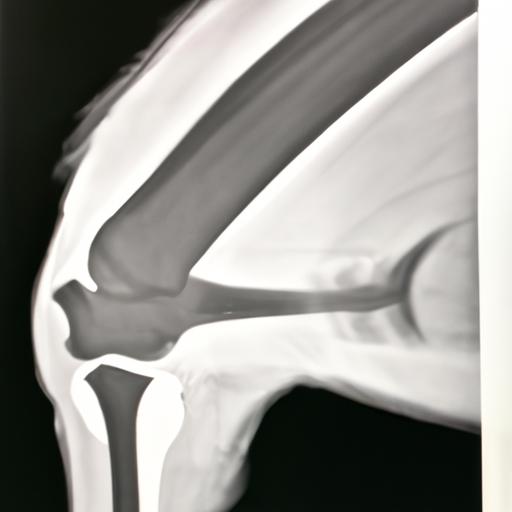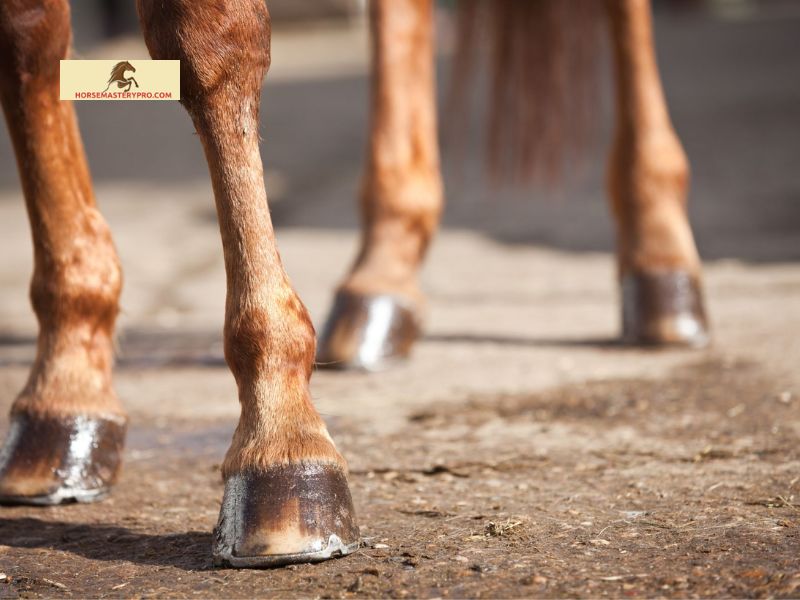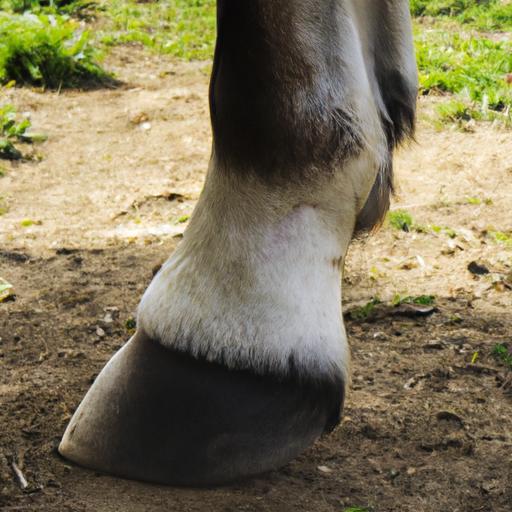Discover effective strategies for managing false ringbone in horses. Learn about rehabilitation exercises, therapies, and the importance of a balanced diet for hoof health.
False ringbone in horses is a condition that affects their hooves and can cause significant discomfort and lameness. As horse owners and enthusiasts, it is crucial to have a comprehensive understanding of this condition and how to effectively manage it. In this article, we will delve into the world of false ringbone, explore its causes, symptoms, and diagnosis, and discuss various treatment options available.
What is False Ringbone?
False ringbone, also known as high ringbone, is a degenerative condition that primarily affects the pastern joint of horses. It is characterized by the formation of bony growths around the joint, leading to inflammation, pain, and lameness. While true ringbone affects the coffin joint, false ringbone primarily affects the pastern joint, making it important to differentiate between the two.
Understanding the Causes
False ringbone can be caused by various factors, including repetitive stress or trauma to the pastern joint, improper hoof balance, conformational abnormalities, and even genetic predisposition. It can occur in horses of all ages and breeds, but is more commonly observed in performance horses or those engaged in high-impact activities.
Importance of Managing False Ringbone
Managing false ringbone is crucial to ensure the well-being and soundness of our equine companions. Ignoring the condition or delaying treatment can lead to worsening lameness and long-term complications. By understanding the causes, symptoms, and available treatment options, we can take proactive measures to alleviate pain, promote healing, and enhance the quality of life for our horses.
In the following sections, we will explore the symptoms and diagnostic procedures for false ringbone, discuss the various treatment options available, delve into preventive measures, and shed light on effective management and long-term care for horses affected by this condition. So, let’s dive deeper into the world of false ringbone and equip ourselves with the knowledge to ensure the optimal health and happiness of our beloved equine companions.
Stay tuned for the upcoming sections where we will discuss the symptoms, diagnosis, treatment options, preventive measures, management, and long-term care for false ringbone in horses.
Remember, your horse’s well-being is our top priority!
Stay tuned for Section 2 where we will explore the symptoms and diagnosis of false ringbone in horses.
Symptoms and Diagnosis

Common Symptoms Exhibited by Horses with False Ringbone
When it comes to false ringbone, recognizing the telltale signs is essential for prompt intervention and effective management. Keep an eye out for the following symptoms that horses with false ringbone may exhibit:
- Lameness: Horses with false ringbone often experience lameness that may be intermittent or persistent. The level of lameness can range from mild to severe, depending on the progression of the condition.
- Swelling and Heat: Inflammation around the pastern joint is a common characteristic of false ringbone. Look for swelling, heat, and tenderness in the affected area.
- Restricted Movement: Horses with false ringbone may exhibit restricted movement or stiffness, particularly in the affected limb. They may be reluctant to extend or flex the pastern joint, leading to a shortened stride.
- Changes in Gait: False ringbone can lead to alterations in the horse’s gait. Pay attention to any irregularities such as shortened strides, uneven movement, or a noticeable change in the horse’s way of going.
Diagnostic Procedures and Tests Used to Identify False Ringbone
Accurate diagnosis is crucial for developing an effective treatment plan for horses with false ringbone. Equine veterinarians employ various diagnostic procedures and tests to confirm the presence of false ringbone and assess its severity. These may include:
- Physical Examination: A thorough physical examination of the horse, focusing on the affected limb, is the first step in the diagnostic process. The veterinarian will palpate the pastern joint, assess the range of motion, and observe any signs of pain or discomfort.
- Radiography: X-rays are a valuable tool in diagnosing false ringbone. They enable veterinarians to visualize the bony growths around the pastern joint and assess their size and location. X-rays also help determine the extent of joint involvement and guide treatment decisions.
- Ultrasound: In some cases, ultrasound imaging may be used to evaluate soft tissue structures surrounding the pastern joint. This can provide additional information about the condition of tendons, ligaments, and other supporting structures.
- Nerve Blocks: Local anesthesia or nerve blocks may be used to determine the source of lameness and isolate the affected area. By temporarily numbing specific nerves, veterinarians can pinpoint the location of pain and determine if it is originating from the pastern joint.
Importance of Early Detection and Proper Diagnosis
Early detection and accurate diagnosis of false ringbone are crucial for timely intervention and effective management. Detecting the condition in its early stages allows for more conservative treatment options and a higher likelihood of successful outcomes. Additionally, proper diagnosis ensures that other potential causes of lameness are ruled out, enabling targeted treatment specific to false ringbone.
By closely monitoring our horses, recognizing the common symptoms, and seeking professional veterinary assistance for a thorough diagnosis, we can provide the best possible care for our equine companions. In the next section, we will explore the treatment options available for managing false ringbone in horses.
Stay tuned for Section 3 where we will discuss the various treatment options for false ringbone in horses.
Treatment Options

When it comes to managing false ringbone in horses, there are various treatment options available depending on the severity of the condition. The goal is to alleviate pain, reduce inflammation, and promote healing. Let’s explore the different approaches to treating false ringbone:
Conservative Treatment Methods
In less severe cases of false ringbone, conservative treatment methods can be highly effective in managing the condition. These methods aim to reduce pain and inflammation, improve joint mobility, and slow down the progression of the bony growths. Some common conservative treatment options include:
- Rest and Controlled Exercise: Providing your horse with ample rest and carefully managing their exercise routine can help reduce stress on the affected joint and promote healing.
- Anti-inflammatory Medications: Non-steroidal anti-inflammatory drugs (NSAIDs) may be prescribed by your veterinarian to alleviate pain and reduce inflammation associated with false ringbone.
- Joint Injections: Intra-articular corticosteroid injections can provide targeted relief by reducing inflammation and pain in the affected joint.
Medications and Therapies
In addition to conservative treatments, various medications and therapies can be utilized to manage false ringbone in horses. These can be used in conjunction with other treatment methods or as standalone options depending on the severity of the condition. Some commonly employed medications and therapies include:
- Oral Supplements: Certain oral supplements, such as joint supplements containing glucosamine and chondroitin sulfate, can support joint health and promote cartilage repair.
- Topical Medications: Topical ointments or gels containing anti-inflammatory agents can be applied to the affected area to provide localized relief and reduce inflammation.
- Physical Therapy: Physical therapy techniques, such as range of motion exercises and hydrotherapy, can help improve joint function, reduce stiffness, and promote healing.
Surgical Interventions
In severe cases of false ringbone where conservative treatments and medications are not providing adequate relief, surgical interventions may be necessary. These interventions aim to address the underlying cause of the condition and alleviate pain. Some surgical options include:
- Arthroscopic Surgery: This minimally invasive procedure involves the use of small incisions and specialized tools to remove or modify the bony growths around the joint, thereby reducing pain and improving joint function.
- Fusion Surgery: In cases where the joint has significant degeneration, fusion surgery may be performed to eliminate movement in the affected joint, providing long-term relief.
It is important to consult with your veterinarian to determine the most appropriate treatment option for your horse based on their individual needs and the severity of the condition. Remember, early intervention and a comprehensive treatment plan can significantly improve the prognosis and overall well-being of your horse affected by false ringbone.
Stay tuned for Section 4 where we will explore preventive measures to help manage false ringbone in horses.
Preventive Measures

Proactively taking preventive measures is key to reducing the risk of false ringbone in horses. By implementing the following strategies, you can help safeguard your horse’s hooves and overall well-being:
1. Proper Hoof Care and Maintenance
Regular hoof care plays a vital role in preventing false ringbone. Ensure your horse receives routine hoof trimming and shoeing by a qualified farrier. A well-balanced hoof with proper angles and balanced weight distribution can help alleviate stress on the pastern joint, reducing the likelihood of developing false ringbone. Additionally, maintaining a clean and dry environment for your horse can help minimize the risk of infections and other hoof-related issues.
2. Importance of Regular Farrier Visits
Scheduling regular visits with your trusted farrier is essential for preventive care. These professionals possess the expertise to assess your horse’s hooves, identify any imbalances or abnormalities, and correct them promptly. They can provide valuable advice on proper shoeing techniques, trimming, and overall hoof health. Consistent collaboration with your farrier ensures early detection and intervention, mitigating the risk of false ringbone development.
3. Appropriate Exercise Routines and Conditioning Programs for Horses
Exercise is crucial for maintaining the overall health and soundness of horses. However, it is important to implement appropriate exercise routines and conditioning programs to minimize the risk of excessive strain on the pastern joint. Gradual conditioning, incorporating a variety of exercises such as lunging, longeing, and controlled riding, allows the horse’s muscles, tendons, and ligaments to gradually adapt and strengthen. Avoiding excessive impact activities and providing adequate rest periods can help prevent unnecessary stress on the pastern joint, reducing the likelihood of false ringbone.
By prioritizing proper hoof care, regular farrier visits, and implementing suitable exercise routines and conditioning programs, you can significantly reduce the risk of false ringbone in your horse. Remember, prevention is always better than cure when it comes to equine health and well-being.
Stay tuned for Section 5 where we will discuss effective management and rehabilitation strategies for horses with false ringbone.
Conclusion
In conclusion, false ringbone in horses is a condition that requires careful attention and effective management to ensure the well-being and soundness of our equine companions. By understanding the causes, symptoms, diagnosis, treatment options, preventive measures, and long-term care, we can take proactive steps to minimize the impact of false ringbone on our horses’ lives.
Throughout this article, we have explored the ins and outs of false ringbone, from its definition and causes to the various strategies for managing the condition. We have discussed the importance of early detection, proper diagnosis, and the array of treatment options available, ranging from conservative approaches to surgical interventions.
Rehabilitation exercises and therapies play a crucial role in promoting healing and recovery for horses with false ringbone. By incorporating these exercises into their daily routines, we can help improve their mobility, reduce pain, and enhance their overall well-being. Additionally, maintaining a well-balanced diet is essential for maintaining optimal hoof health, which in turn can support the management of false ringbone.
As horse owners and enthusiasts, it is our responsibility to stay informed and educated about common equine conditions like false ringbone. By doing so, we can provide the best care and support for our beloved horses, ensuring they lead comfortable and fulfilling lives.
Remember, if you suspect that your horse may be suffering from false ringbone, it is always advisable to consult with a qualified veterinarian or equine specialist. They can provide a proper diagnosis, recommend appropriate treatment options, and guide you through the management and rehabilitation process.
For more information and expert advice on horse care and health, visit horsemasterypro.com. Together, let’s ensure the well-being of our equine companions and embark on a journey of horsemanship excellence.
Stay informed, stay proactive, and provide the best care for your beloved horses!


